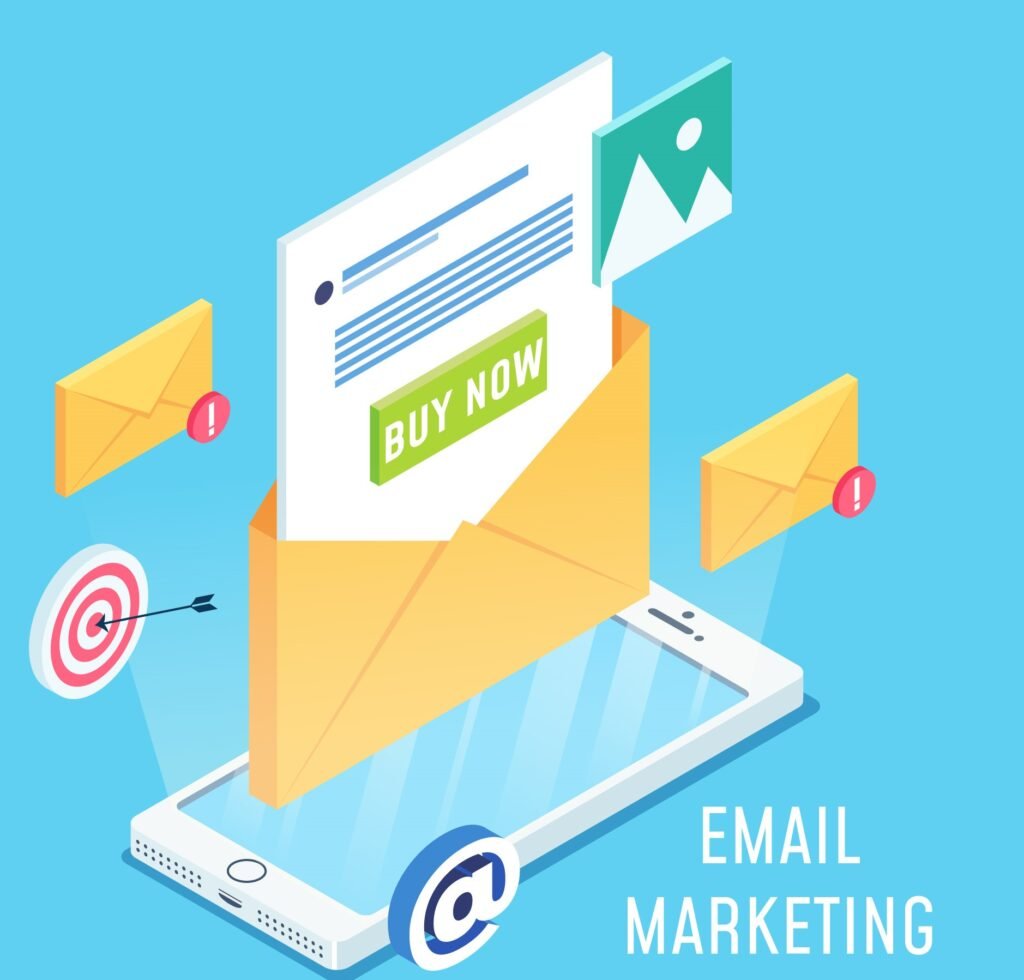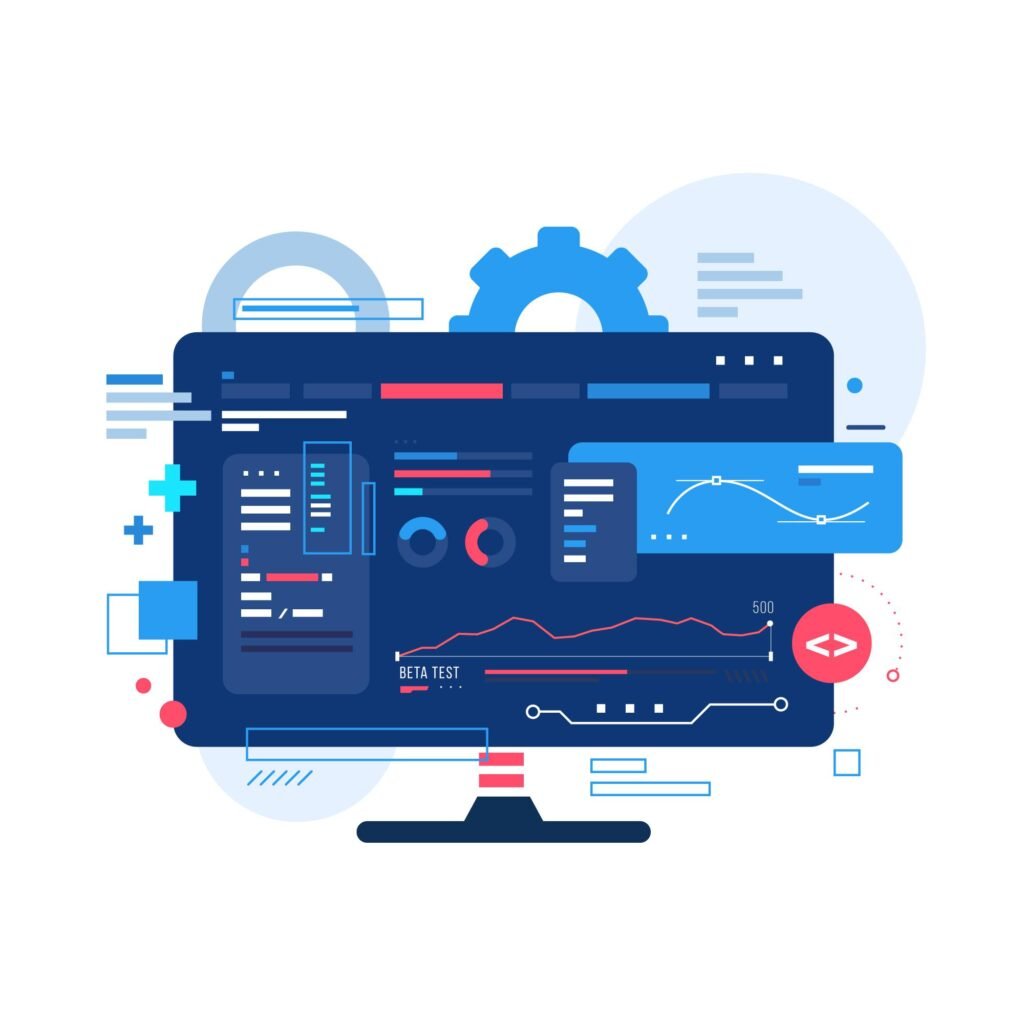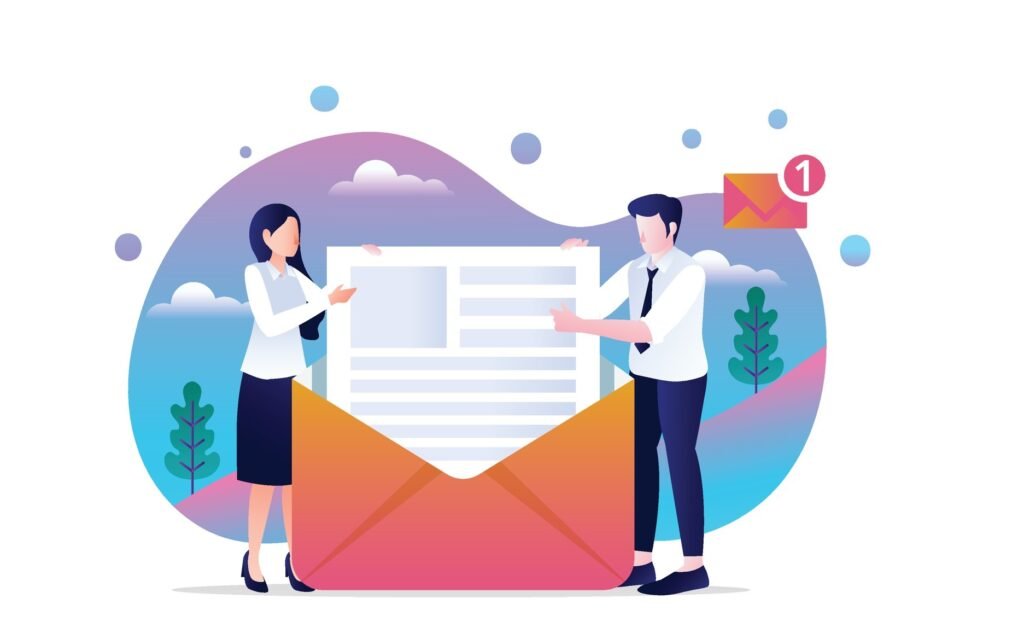
What is Email Marketing?
Email Marketing is a form of direct marketing that uses email to communicate with potential and existing customers. It’s a powerful tool for businesses to promote products or services, build relationships, and encourage customer loyalty.
Where to start Email Marketing?
Starting Your Email Marketing Journey
What do you want to achieve? Are you pointing to increment deals, boost brand mindfulness, or move forward client engagement?
Who is your target audience? Understanding your group of onlookers will offer assistance to tailor your substance and messaging.

Collect email addresses: Use sign-up forms on your website, social media, and in-store promotions.
Offer incentives: Provide value to potential subscribers, such as exclusive discounts, early access to new products, or valuable content.
Maintain list cleanliness: Frequently clean your list to expel inert or invalid mail addresses.
3. Choose an Email Marketing Platform:
Consider your needs: Look for features like email templates, automation, analytics, and integration with other tools.
Popular options: Mailchimp, Constant Contact, HubSpot, and Sendi blue are some well-known platforms.

Write compelling subject lines: Get consideration and empower opens.
Design visually appealing emails: Use clear layouts and consistent branding.
Personalize your content: Tailor emails to individual recipients based on their interests or behavior.
Provide value: Offer helpful information, tips, or solutions to your audience’s problems.
A/B testing: Experiment with different subject lines, email designs, and send times to find what works best.
Track metrics: Monitor open rates, click-through rates, and conversions to measure your campaign’s success.

Welcome emails: Greet new subscribers and provide valuable information.
Abandoned cart emails: Remind clients around things they cleared out in their carts.
Transactional emails: Confirm orders, send shipping updates, and provide customer support.
CAN-SPAM Act: Adhere to anti-spam laws in your region.
Consent: Get express assent from supporters some time recently sending them emails.
Unsubscribe options: Make it easy for subscribers to unsubscribe from your list.
By following these steps and continuously refining your strategy, you can effectively leverage email marketing to achieve your business goals. Starting Your Email Marketing Journey
Why is Email Marketing important for business?
Email Marketing is crucial for businesses because it offers several significant advantages:
High ROI: Email Marketing often delivers a high return on investment (ROI) compared to other marketing channels.
Targeted reach: You can segment your email list to send messages to specific groups of customers based on their interests or demographics.
Measurable results: Email Marketing provides data on open rates, click-through rates, and conversions, allowing you to track the effectiveness of your campaigns.
Cost-effective: Compared to traditional advertising methods, email marketing is generally more affordable.

Builds relationships: Email Marketing allows you to nurture relationships with your customers by providing valuable content, personalized recommendations, and exclusive offers.
Encourages customer loyalty: By staying in touch with customers through regular emails, businesses can strengthen their brand loyalty and encourage repeat purchases.
Supports other marketing efforts: Email Marketing can be used to promote other marketing channels, such as social media or your website.
In summary, Email Marketing is a powerful tool that can help businesses reach their target audience, build brand loyalty, and drive sales.
What companies use Email Marketing?
Nearly all businesses, regardless of size or industry, use email marketing in some capacity. It’s a versatile and cost-effective tool for reaching customers and achieving various marketing goals.
Here are some examples of companies that commonly use email marketing:
E-commerce retailers: Use email to promote new products, sales, abandoned cart reminders, and personalized recommendations.
Subscription services: Send regular updates, offer exclusive content, and remind customers to renew their subscriptions.
Software companies: Promote new features, provide tutorials, and offer support through email.

News organizations: Distribute newsletters, breaking news alerts, and exclusive content.
Non-profit organizations: Raise funds, promote events, and share updates with supporters.
B2B companies: Generate leads, nurture relationships with clients, and share industry insights.
Personal brands: Build an audience, promote products or services, and share valuable content.
Essentially, any business that wants to connect with its customers and achieve marketing objectives can benefit from email marketing.
What are Email Marketing examples?
Here are some common types of email marketing campaigns used by businesses:
Sales and discounts: Announcing special offers, limited-time deals, or clearance sales.
New product launches: Introducing new products or services to your audience.
Upselling and cross-selling: Suggesting complementary products or upgrades to existing customers.
Order confirmation: Confirming purchases and providing order details.
Shipping notifications: Informing customers about the status of their orders.
Invoice and receipt: Sending invoices and receipts for purchases.

Welcome emails: Greeting new subscribers and providing valuable information.
Customer surveys: Gathering feedback from customers to improve products or services.
Birthday wishes: Sending personalized birthday greetings to customers.
Holiday greetings: Wishing customers a happy holiday season.
Educational and Informative Emails
Blog updates: Sharing new blog posts or articles.
Tutorials and how-to guides: Providing helpful information or instructions.
Industry news and trends: Keeping customers updated on the latest developments in your industry.
Reminders: Reminding customers about items they left in their carts.
Incentives: Offering discounts or promotions to encourage completion of the purchase.
Product suggestions: Suggesting products or services based on customers’ past purchases or browsing behavior.
Curated content: Sending personalized content recommendations based on interests.

Flash sales: Offering short-term, time-sensitive discounts.
Early bird discounts: Providing discounts for early sign-ups or pre-orders.
Holiday promotions: Offering special deals or products for holidays like Christmas, Thanksgiving, or Valentine’s Day.
Seasonal sales: Promoting products or services that are relevant to specific seasons or weather conditions.
